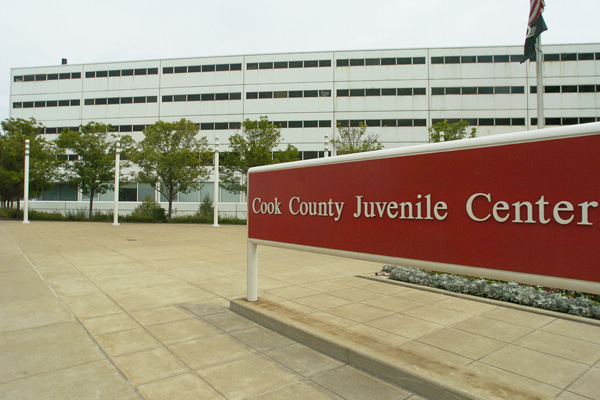
Photo: Milbert O. Brown / Chicago Tribune
A few years ago, Illinois—and Chicago in particular—realized it had a problem on its hands with both juvenile recidivism and juvenile incarceration. Despite the tremendous amounts of money spent on it (almost $90,000 a year per kid, though the county estimates that the costs here are $225k per year), there wasn't enough money to properly house young inmates. The Cook County Juvenile Temporary Detention center just couldn't stay on the right side of the law:
The Cook County Juvenile Temporary Detention Center (CCJTDC) has been the subject of litigation and media review since 1999, when the ACLU first filed a lawsuit alleging unsafe and inadequate conditions. The facility is still under court-appointed management. Conditions remain so troubling that Cook County Board President Toni Preckwinkle recently concluded "we need to do everything we can to empty this building out."
During the 1990s, overcrowding at the facility ran as high as 165 percent of capacity, and the population was badly underserved; despite widespread mental health and drug problems among those incarcerated, they received next to nothing in the way of treatment. To borrow a phrase, it was "a depot for children," more "a jail than a temporary residence for youths waiting to see a judge." It was an embarrassment for a city that created the first juvenile court in the nation.
Oh, and it didn't work, either: "in places like Chicago, nearly two-thirds of youths leaving detention never re-enroll in school, those who do often drop out quickly, and around half are rearrested within three years."
The ACLU filed a lawsuit against the county in 1999, but conditions remained bad enough that a federal judge put the center under the control of a juvenile justice expert in 2007. It's been slow, but the county is trying to change the way it does business with young offenders. And there's evidence that reducing incarceration works—and is cheaper. Here's Brad Plumer:
The kids who ended up incarcerated were 13 percentage points less likely to graduate high school and 22 percentage points more likely to end up back in prison as adults than the kids who went to court but were placed under, say, home monitoring instead. (This was after controlling for family background and so forth.) Juvenile detention appeared to be creating criminals, not stopping them.
There's logic behind it. As bad as the environments are that some of the offenders come from, it's nothing like locking them in an overcrowded, badly run "depot" can be worse:
The authors lay out a couple of reasons why this would be. Going to prison can obviously disrupt school and make it harder to get a job later on. But also, as other researchers have found, many people who end up behind bars end up making friends with other offenders and building “criminal capital.” Prison turns out to be excellent training for a life of crime.
It's also much, much cheaper—from the estimates I've seen, around a tenth as much, though that obviously varies on the intensity of the community-based treatment. And that's not including the external costs of re-offending.
So what's the delay? Well, you have to spend money to save money: "Still, Dunlap said Thursday that he agreed with the report's recommendations for population reduction and new facilities. But he cautioned that the center would need more money to achieve some of these goals and said reform is needed in other juvenile justice-related agencies, as well as the community."


